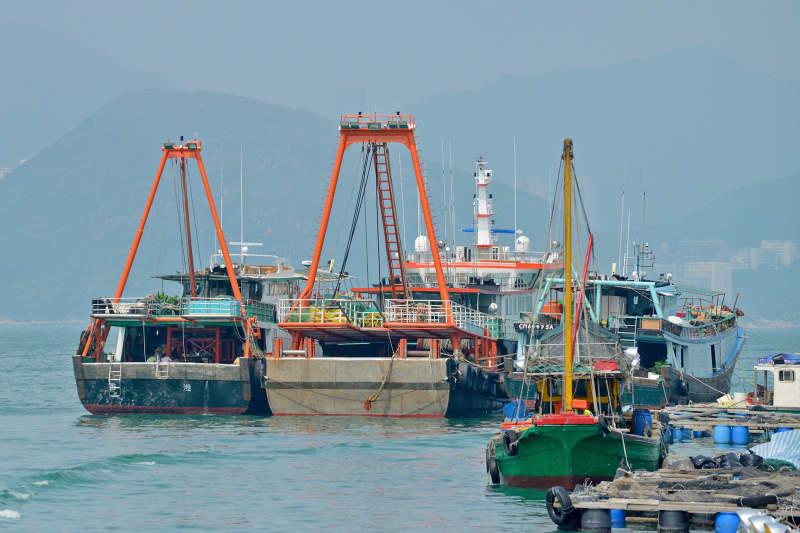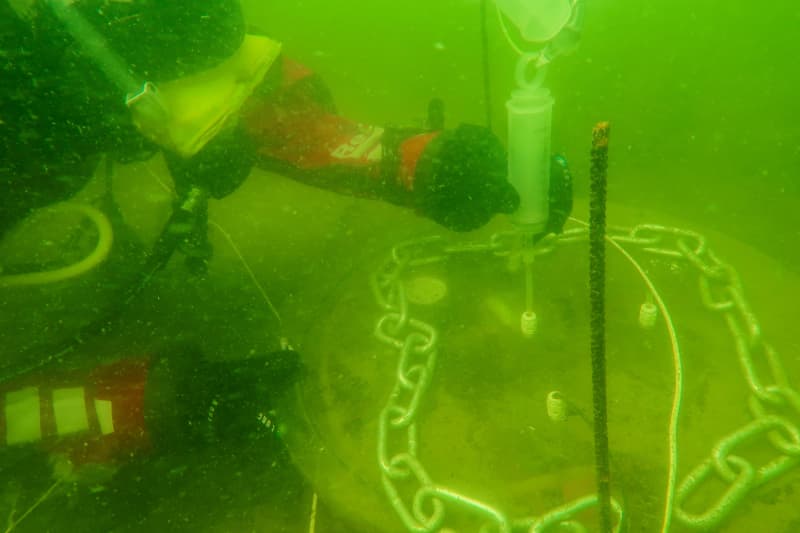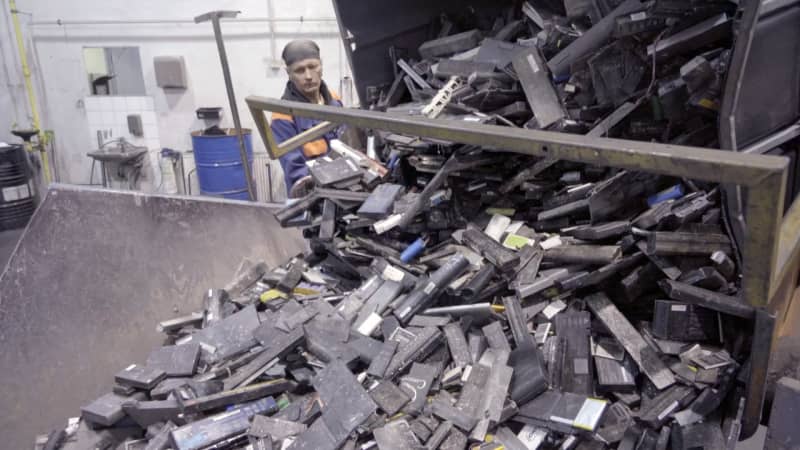According to a group of researchers led by the University of Cambridge, human activity is often behind the issues that threaten the seas.
Mining of lithium from the depths of the oceans, overfishing of deep-sea species and the unexpected effects of land-based wildfires on the seas. These are some of the fifteen questions that experts say we should address now.
As a result of the work of a group of researchers led by the University of Cambridge, a list of dangers threatening the diversity of seas and coasts was created. The article has been published in Nature ecology
In the spirit of the annual horizon analysis, which deals with conservation issues, 30 experts from different parts of the world assess what kind of effects different human activities can have on marine and coastal ecosystems in the next decade.
Several of the observed issues are related to the utilization of marine natural resources. For example, deep-sea saltwater basins are unique marine environments with a wide variety of life, but also large salt deposits containing lithium.
The authors warn that growing demand for lithium in electric car batteries could put these environments at risk. Scientists are calling for rules to ensure biodiversity is assessed before deep-sea saltwater pools are exploited.
These saltwater pools are likely to host many endemic and genetically distinct species that are largely undiscovered or awaiting formal description.
The marine ecosystem is changing
If fishing is extended to fish species that swim deeper in the sea, considerable changes may occur in the cycle of nature.
Although overfishing is already an immediate problem, the horizon analysis looked further into what could happen next.

The authors believe that soon we may switch to fishing in deeper waters in the mesopelagic zone, i.e. at a depth of 200–1,000 meters. The fish living there are not suitable for human consumption, but they can be sold as feed for fish farms.
In the Nature article, Thornton adds that curbing fishing would not only stop the overfishing of these fish stocks, but also reduce disturbances in the ocean’s carbon cycle, as these species are the ocean’s pump that removes carbon from the atmosphere.
The warming of the seas near the equator impoverishes the species in these sea areas and also changes the nutritional content of the fish more widely. No new species move to the hottest sea areas, because the species moves towards the polar regions in search of conditions to which it has adapted.
Essential fatty acids are usually produced by cold water fish species. As climate change increases the temperature of the oceans, the production of these nutritious molecules decreases. Such changes can have effects on both marine life and human health.
Nutrients and toxins flow into waterways
The frequency and severity of wildfires will increase with climate change. Since 2017, Australia, Brazil, Portugal, Russia and the Pacific coast of North America have experienced unprecedentedly large and long-lasting forest fires.
In addition to threatening human lives and releasing stored carbon, wildfires release aerosols, particulate matter, and large amounts of materials that contain soluble forms of nutrients such as nitrogen, phosphorus, and trace metals such as copper, lead, and iron.
Winds and rains can transport these substances long distances to coastal and marine ecosystems.
For example, wildfires in Australia caused extensive phytoplankton blooms in the Southern Ocean and fish and invertebrate deaths in estuaries.
The magnitude and effects of emissions are difficult to predict because they vary with the size and duration of wildfires, the type of burning vegetation, rainfall, riparian vegetation buffers, aerosol and current-induced dispersal, seasonality, and nutrient deficiencies of the receiving ecosystem.
Wildfires can therefore temporarily increase primary productivity in a useful way, or have no effect. Adverse consequences can be the mortality of bottom invertebrates – such as corals – due to sedimentation, coastal darkening, eutrophication or algal blooms.
Coastal waters darken
According to the research group, coastal ecosystems are dependent on the access of light to the primary production of plankton algae and attached algae as well as sea grass.
However, climate change and human activity increase the weakening of the light due to the color of the water and substances dissolved in the water. Increased rainfall, storms, melting permafrost and coastal erosion have resulted in the browning of freshwater ecosystems.
It is caused by the increase of organic carbon, iron and particles. All of these are eventually released into the sea. Coastal eutrophication leading to algal blooms exacerbates this darkening by further blocking light penetration.
In addition, changes in land use, dredging and bottom fishing can further increase the mixing of sediments with the water and turbidity.
Such changes can affect the chemistry of the ocean, causing dissolved organic carbon to break down and produce toxic chemicals.
Acidification of the seas, on the other hand, can increase the absorption of metals into, for example, mussels, which are used as human food.
There are risks hidden in the multifaceted utilization of marine materials
Collagens are structural proteins that are increasingly used in cosmetics, pharmaceuticals, nutraceuticals and biomedical applications.
The growing demand for collagen has spurred recent efforts to find new sources that avoid religious restrictions and mitigate the risks of disease transmission from traditional beef and pork sources.
The search for alternative sources has revealed untapped opportunities in marine life, such as fishing bycatch. Jellyfish and mushrooms also contain collagen.
The effects of the expansion of trade in fish swim bladders on target and non-target species have already caused overfishing of certain fish species. The fate of the Chinese bahaba fish may now follow the totoaba of the Gulf of Mexico.
Now, overfishing has driven both the totoaba population and the vaquita species, which is caught as bycatch in the Gulf of Mexico fishery, to near extinction.
By 2018, totoaba swim bladders were selling for US$46,000 per kilogram. However, the increased demand was due to the overfishing of the traditional species, the Chinese bahaba, during the last century.
Human activity affects the seas in many ways
The research team lists several emerging factors that are caused by human activity. Others are related to broad environmental threats such as climate change and overuse of resources, others anticipate new technology: In the future, cities can be built on top of the sea and researchers can monitor sea creatures that stay underwater with the help of new technology.
He says that the method of compiling the report was somewhat multi-phased. 32 of the 75 anonymously addressed topics sent by the participants were selected in a vote in the first round.
Then each participant ranked the best ones, discussed and voted on one by one in the day-long workshop, and thus the final fifteen were obtained.
After the selection, the topics were redistributed and someone who had not written the topic in question was allowed to write the text of the topic to be published from the beginning. The subjects were handled anonymously throughout the process and the manuscript to be published was written together through intensive email correspondence.
In this way, the end result is the output of the entire working group and the contribution of individual authors is not visible, although Kaartokallio is completely satisfied with the end result.
– The considerable pressure of human activity on marine and especially coastal ecosystems requires constant vigilance, so that the changes do not cause harmful effects that arise unintentionally, says Hermanni Kaartokallio.

Kaartokallio has studied the breakdown of biodegradable materials in the marine environment, and they are featured in this report as well. The long-term and large-scale effects of the use of biodegradable polymers in products and the unintentional release of by-products such as microfibers into the environment are not yet known.
Along with extensive changes, such as the side effects of climate change, socio-industrial changes can result in new pressures on the marine environment. Kaartokallio cites as an example the contamination of heavy metals and the increase in pollution as a result of large-scale electrification.
– If the demand for a product is focused on a small number of species, it can lead to rapid changes in their utilization.
Kaartokallio mentions, for example, the use of swim bladders of large and slow-growing fish species in Asian cuisine and as a luxury product. Protection does not always keep up when exploitation targets new species.
The new publication opens up insights for readers that have not been thought of before. How some change in the environment causes a chain reaction, the end result of which surprises.
According to Kaartokallio, in connection with climate change, there has been more talk about the Arctic region and black carbon than about the effects of increased wildfires on marine and coastal ecosystems.
In terms of the Baltic Sea, new ideas are needed, for example, in wind farms built in the open sea. They could also house protected areas and fish farming.
– It is interesting how one could think about offshore construction, what other activities could be placed in the open sea, for example, in the same area as the wind farm. It is also interesting from the point of view of the Baltic Sea, when the construction of offshore wind power increases, thinks Hermanni Kaartokallio, lead researcher of the Finnish Environment Institute.
The researcher also highlights the risks associated with recycling the ever-increasing battery waste, especially lithium batteries. Batteries are recycled by burning and chemically, which can release heavy metals into the water. Some battery binder and electrolyte chemicals are toxic to aquatic life or form persistent organic pollutants during incomplete combustion.
A large part of the batteries also still end up in mixed waste. Safe recycling requires advanced technology, and exporting battery waste to developing countries can transfer risks elsewhere.

